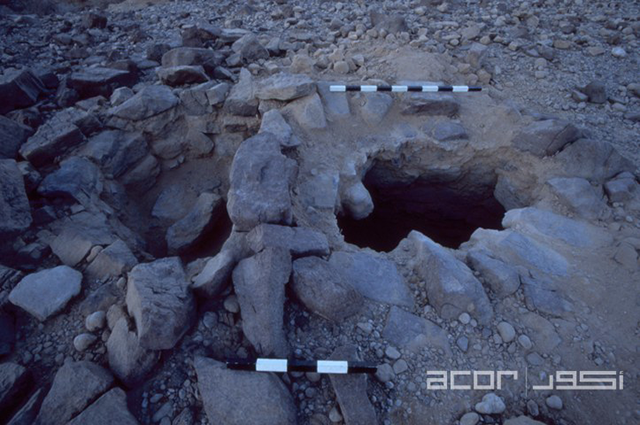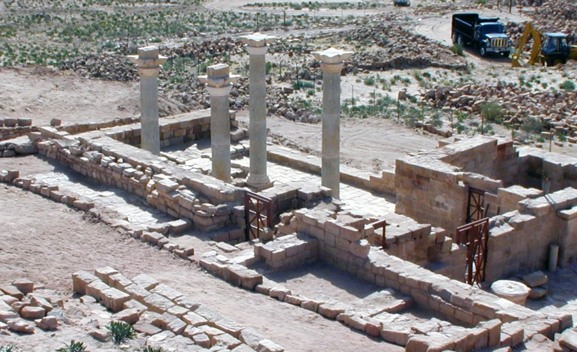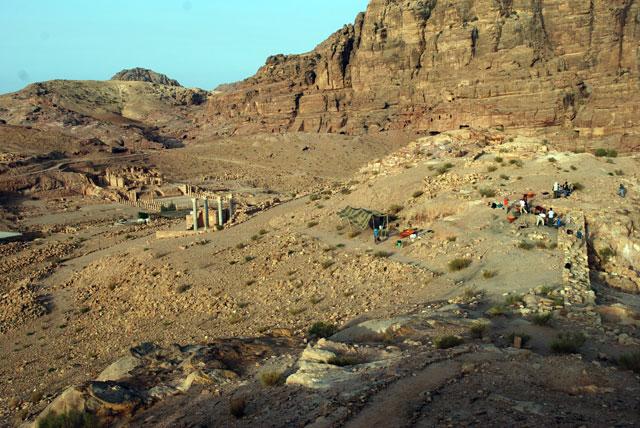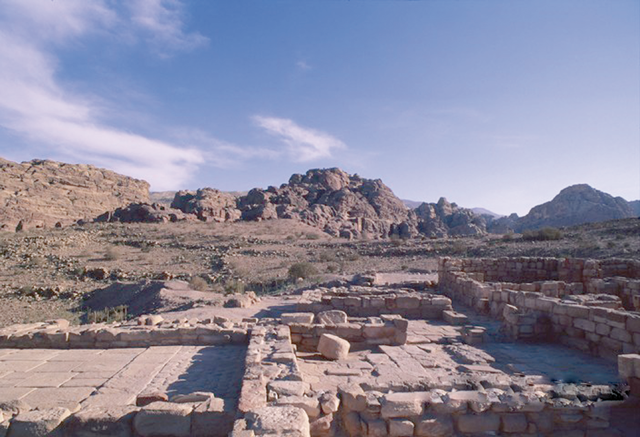You are here
Tomb complexes dispersed across Petra showcase sociopolitical dynamics during Nabataean, Roman times
By Saeb Rawashdeh - Dec 06,2023 - Last updated at Dec 06,2023

A shaft tomb in Petra (Photo courtesy of ACOR)
AMMAN — The Nabataean social structure revolved around the family, clan and tribe, and it can traced back the Nabataean nomadic past. However, the sociopolitical organisations of the Petra’s hinterland were not studied enough in the past and they remained relatively unknown. During Nabataean and Roman times (1st century BC-2nd century AD) the combination of relations between pastoralist and more sedentary rural population in the Petra region took place.
“This is particularly well highlighted when considering the numerous Nabataean tomb complexes distributed throughout the urban limits of Petra. These tomb complexes not only feature the monumental tomb façades, they also encompass ritual banqueting installations, which were accessed by a central courtyard,” noted Will Kennedy from the Nurnberg University in Germany.
The Nabataean tomb complexes are comparable to the Greaco-Roman secular luxury architecture and Greaco-Roman funerary structures from the same period. The characteristic of necropolis has been that tombs were closed spaces where only members of the family and friends had an access.
“Other examples of Nabataean Heterotopiai possibly include the tribal sanctuary known as the ‘Obodas Chapel’ located immediately south of Petra’s urban centre,” said Kennedy.
Dating as early as the 2nd century BC, this family or clan-run sanctuary features both rock-cut and freestanding triclinia (dining tables and couches), and thus further underlines the social significance of ritual banqueting within Nabataean culture, Kennedy elaborated, adding that comprehensive study of the epigraphic evidence from Petra has led her to identify different social groups that collectively commemorated a specific deity.
“As these groups are also mostly associated with triclinia and Nabataean fraternal cultic associations known as the marzeah, the social significance of Nabataean ritual banqueting is once more emphasised,” Kennedy said, noting that, such spaces suggest a deeply tribal-based social structure that may be considered as a reflection of the nomadic past that continued to characterise Nabataean society and culture in Petra well after their “sedentarisation” in and around the city from the 1st century BC onward.
Recent research has contributed important insights into more non-sedentary aspects of Petraean culture; however, the lack of convincing archaeological evidence within wider Nabataea has impeded further studies in this regard.
“It became clear that a pastorally organised rural population constituted a significant part of the Petraean hinterland in the Nabataean Period and beyond, and that a certain degree of mobility very much characterised life in Petra’s rural environment in addition to a “sedentary”, “agriculture-based lifestyle”, Kennedy outlined.
Moreover, larger and more significant settlements in the Petraean hinterland such as Sabra, Abu Khusheiba, Wadi Musa, Beidha or Udruh may have served as local centres for specific rural social groups as well, Kennedy continued, adding that although such hypotheses require further research, the identified structures in Petra’s rural environs may indicate that — as in urban Petra — the Petraean hinterland can be characterised as an intricate patchwork of various social groups that were strongly bound by more local, ‘tribal’ affiliations.
“If indeed true, the Nabataean kings in Petra certainly must have maintained good relations to these satellite communities as they arguably played a significant role for the survival of the Nabataean capital and the overall stability of the entire Nabataean realm,” Kennedy highlighted.
Related Articles
AMMAN — After excavation of the Petra Church, a group of researchers worked on two churches on the higher slope — the Ridge Church and the B
AMMAN — Petra’s monumental tombs represent a familiar sight for researchers working in the area, however, less familiar are the chambers cut
AMMAN — During Hellenistic Period [323BC-32BC] very few inscriptions referred to the Nabataean merchants in the Hellenistic world.


















